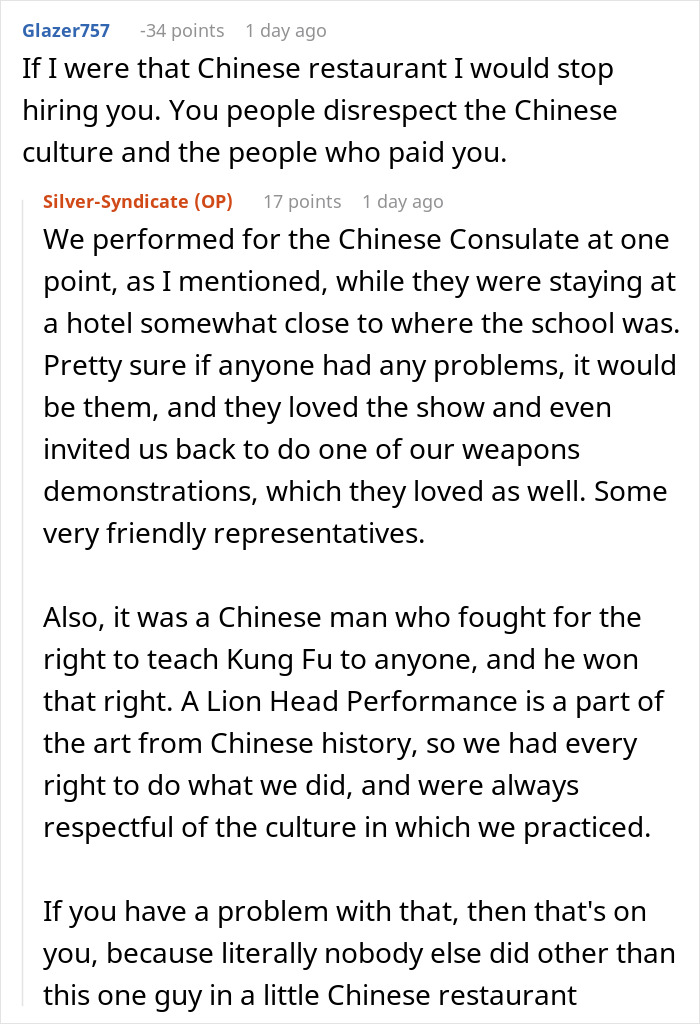Sports or martial arts are about more than just physical activity. They teach people discipline, require them to respect those around them—be it a rival or a teammate—and shape the core values people tend to live by.
For this Kung Fu student, it was their teacher—their Sifu—who taught them the importance of respecting others and standing up for what’s right. He led them by example by standing up for said student when someone tried to offend them, all the while using malicious compliance instead of Kung Fu moves. Scroll down to find the full story below.
Kung Fu focuses a great deal on showing respect for the art and the people involved
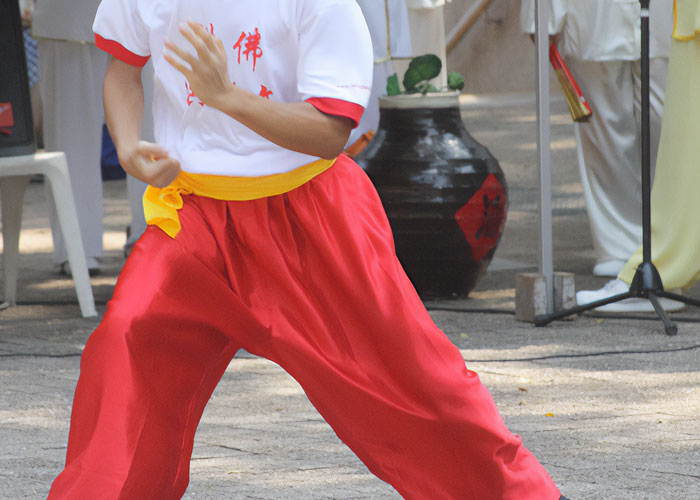
Image credits: Kyle Taylor / flickr (not the actual photo)
This Kung Fu student’s Sifu made sure they were treated with the respect they deserved

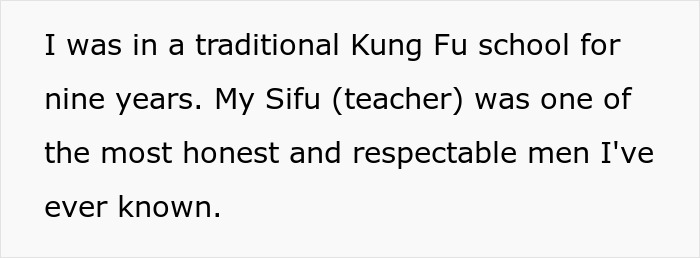

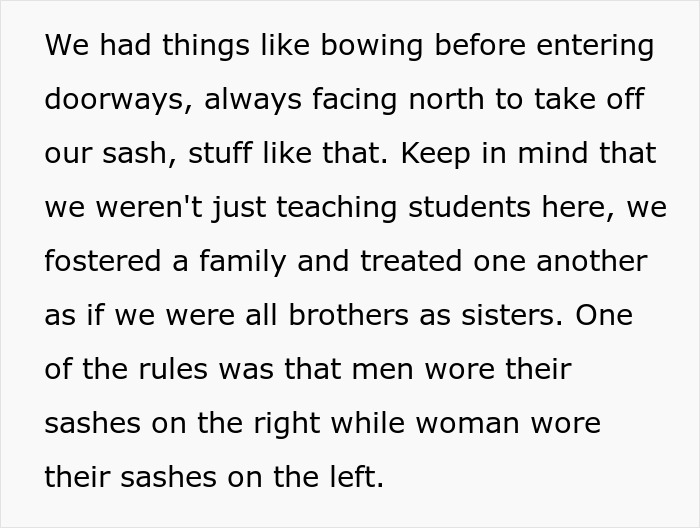
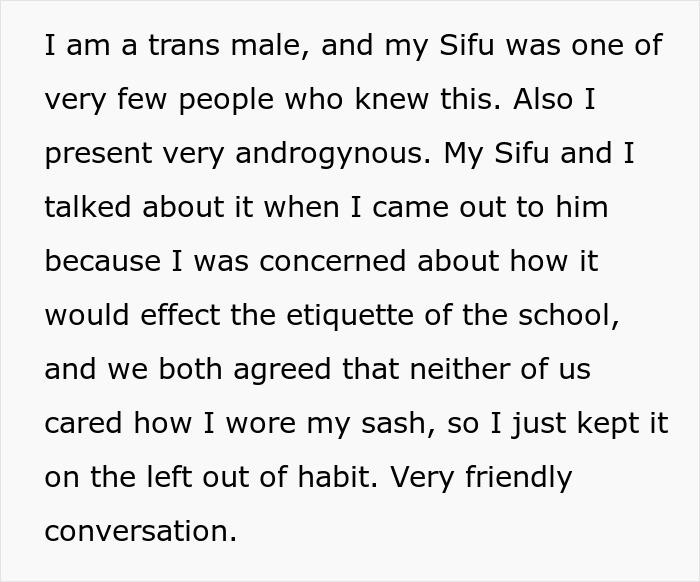
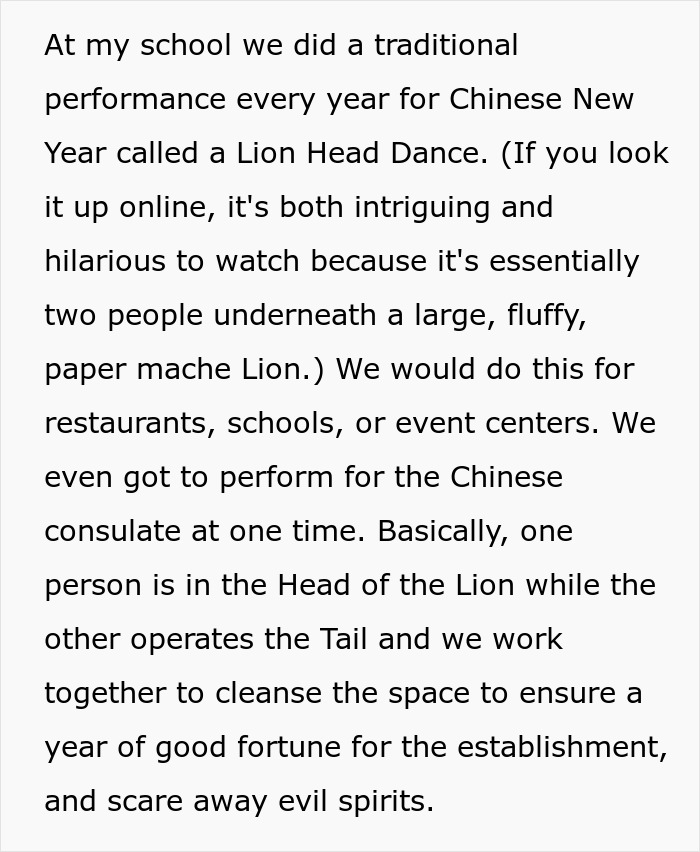
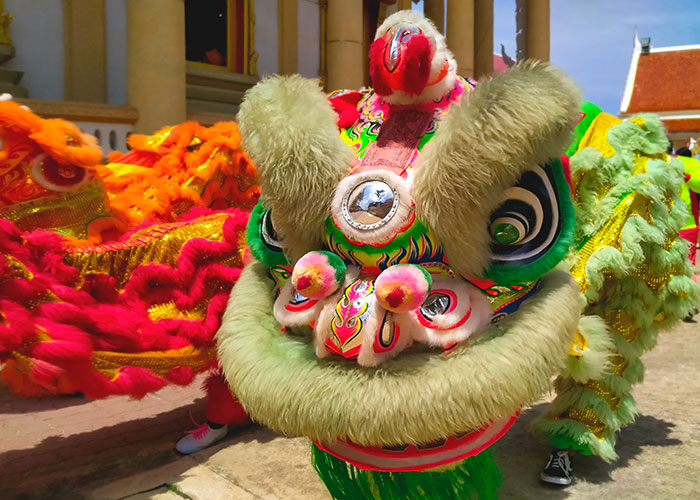
Image credits: aowsakornprapat / envatoelements (not the actual photo)
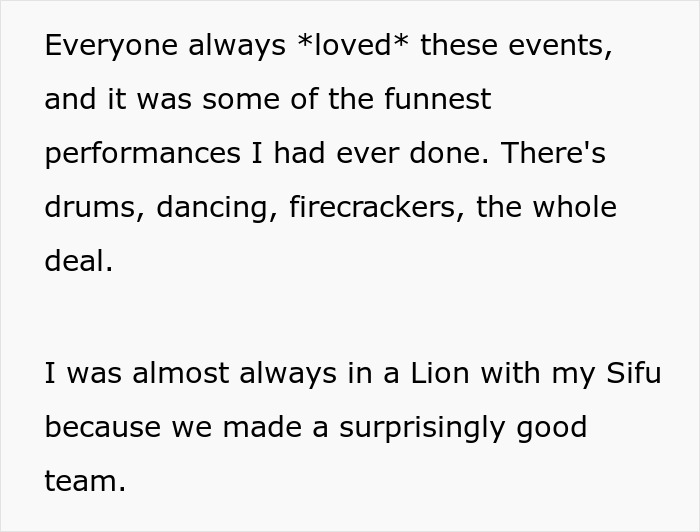
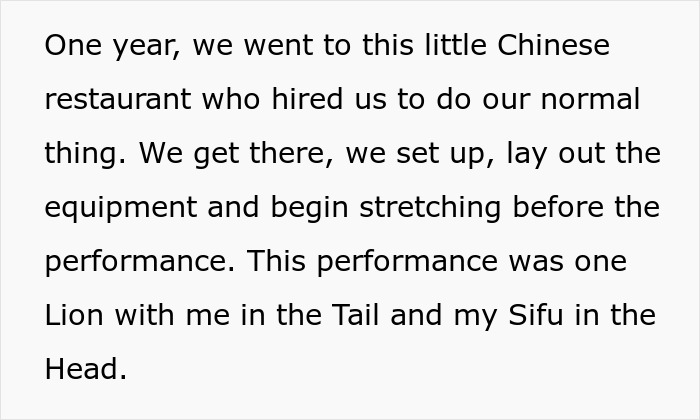

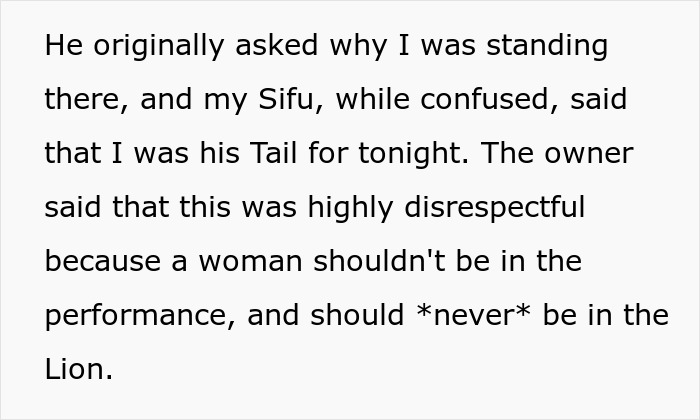
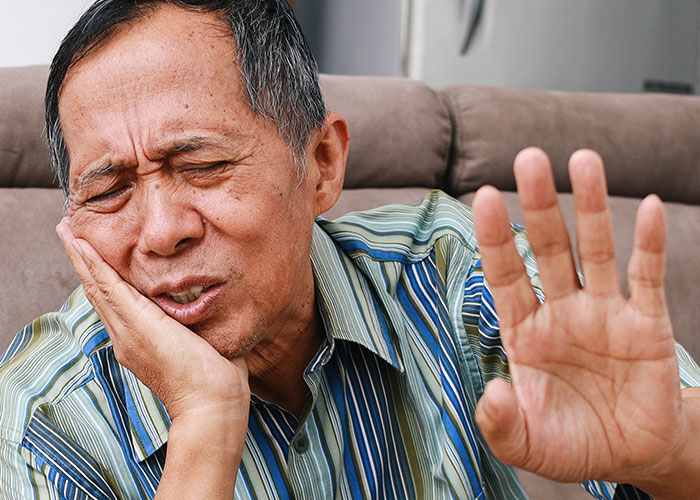
Image credits: Garakta-Studio / envatoelements (not the actual photo)
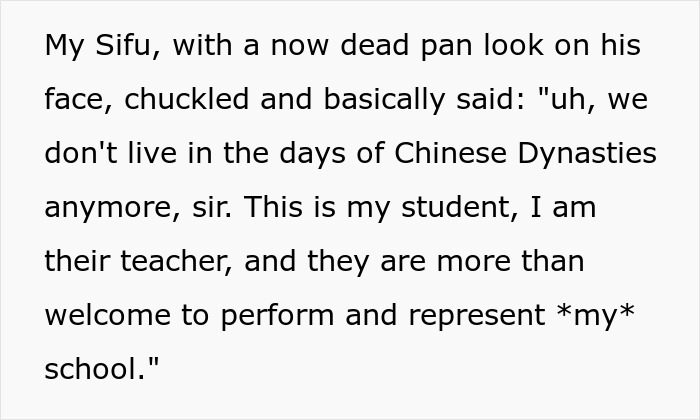



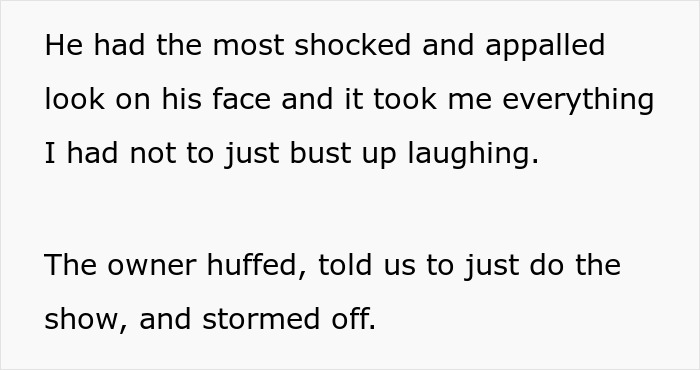
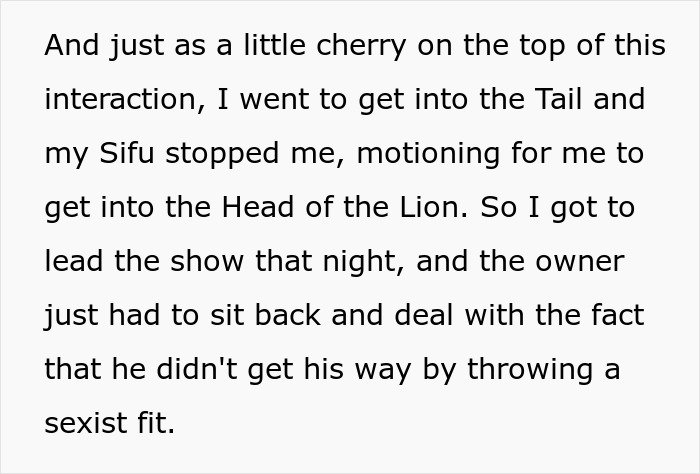
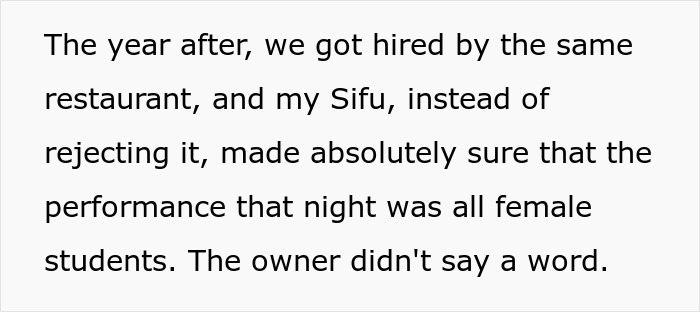
Image credits: Silver-Syndicate
Kung Fu is a complex practice dating back thousands of years
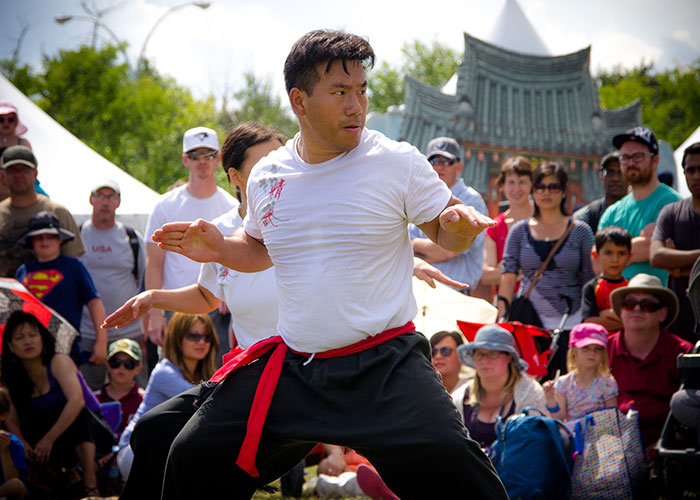
Image credits: Kurayba / flickr (not the actual photo)
For many people, it might be difficult to stop themselves after saying Kung Fu and not to add the word ‘Panda’, thanks to the animated comedy film from 2008. However, the intricate art form itself dates waaay before the cinematic masterpiece loved by many.
Developed in China, Kung Fu is a complex system of combat and self-defense, the origins of which can be traced back to roughly A.D. 220-65. According to the British Kung Fu Association, the term itself—also known as ‘Gung Fu’—literally means ‘achievement through great effort’, as ‘kung’ stands for achievement or merit and ‘fu’ can be translated as man.
Though, according to the BBC, Kung Fu isn’t actually called this way in China. In its country of origin, the martial art is typically referred to as ‘wushu’, from ‘wu’, meaning “going into battle with a weapon on your shoulder” and shu, standing for “exquisite skills”. But despite what the name suggests, combat isn’t the main focus of Kung Fu; the core values that it fosters are respect, humility, and compassion.
Members of Kung Fu clubs often become performers of the Lion Head Dance
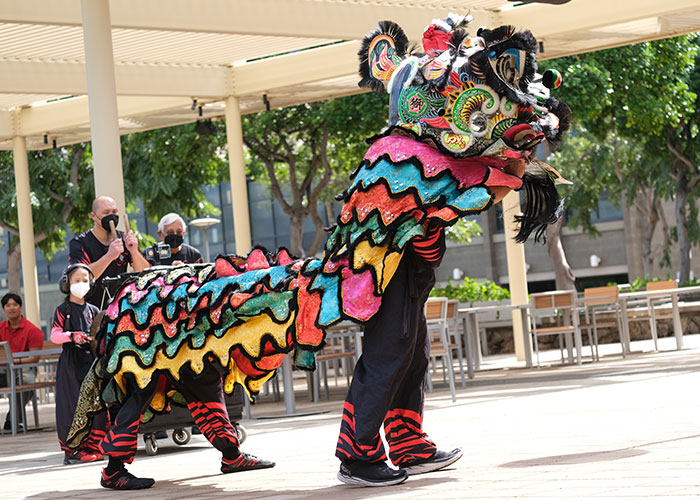
Image credits: University of Hawai‘i–West O‘ahu / flickr (not the actual photo)
In addition to fostering the traditional values that Kung Fu entails, the OP’s school also had the tradition of performing the Lion Head Dance, a staple of the Chinese New Year celebration. As pointed out by the British Kung Fu Association, such performances—carried out to ward off evil and bring good fortune—are often linked to kung fu clubs as they are quite physically demanding and require high agility. In addition to that, the Lion Head Dance incorporates kung fu-derived stances, kicks and other movements, which practitioners usually have mastered.
According to the aforementioned source, the front part of the lion costume, its head, can get surprisingly heavy, which makes it rather difficult to navigate. However, being the ‘tail’ of the dragon is arguably not that much easier, as it requires the dancer to be bent for lengthy periods of time. It can also call for becoming a platform, which the person in the head of the dragon might need to stand on.
Needless to say, the dance is a challenging task to master and to perform, but, according to the association, kung fu clubs take great pride in being able to do it. It’s arguably safe to assume that the OP felt proud to do it, too, especially after their Sifu suggested that they lead the performance being the Head of the Lion. That was likely one of the reasons quite a few redditors in the comments applauded the master, with one of them saying that “their back would not like the bow the OP’s Sifu deserves.” Scroll down to find their thoughts below.
Fellow netizens shared their thoughts in the comments, they didn’t hold back praise for the Sifu

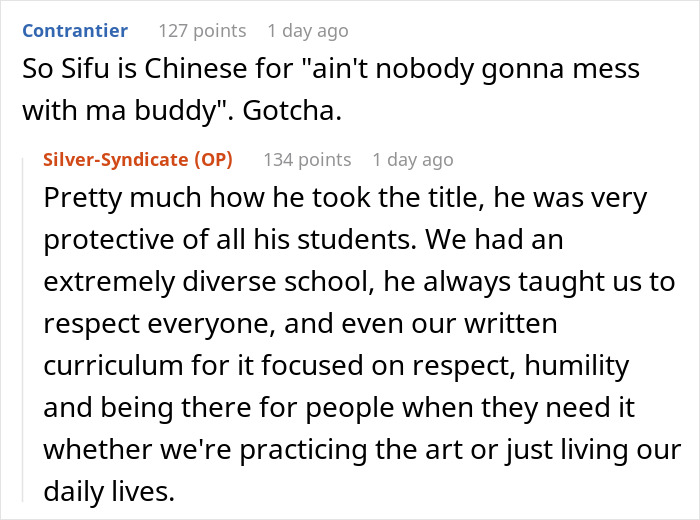
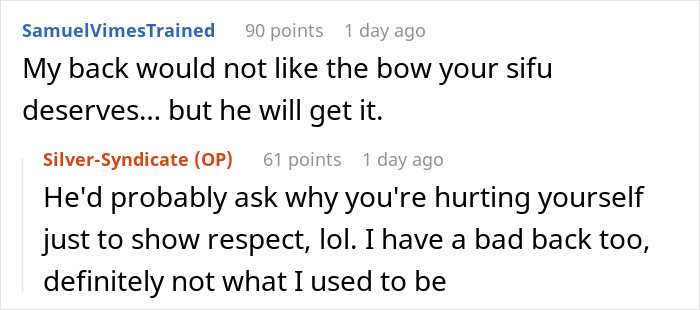
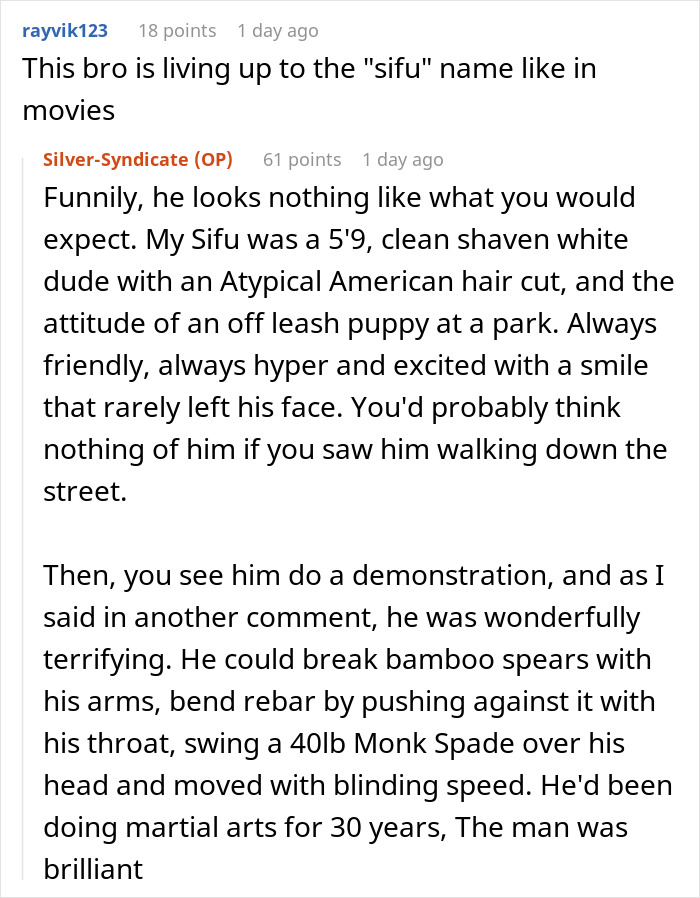
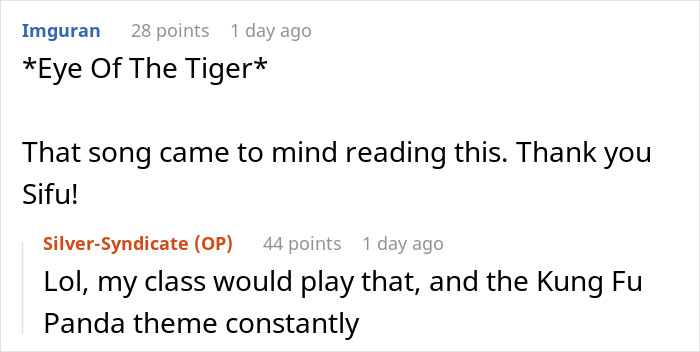
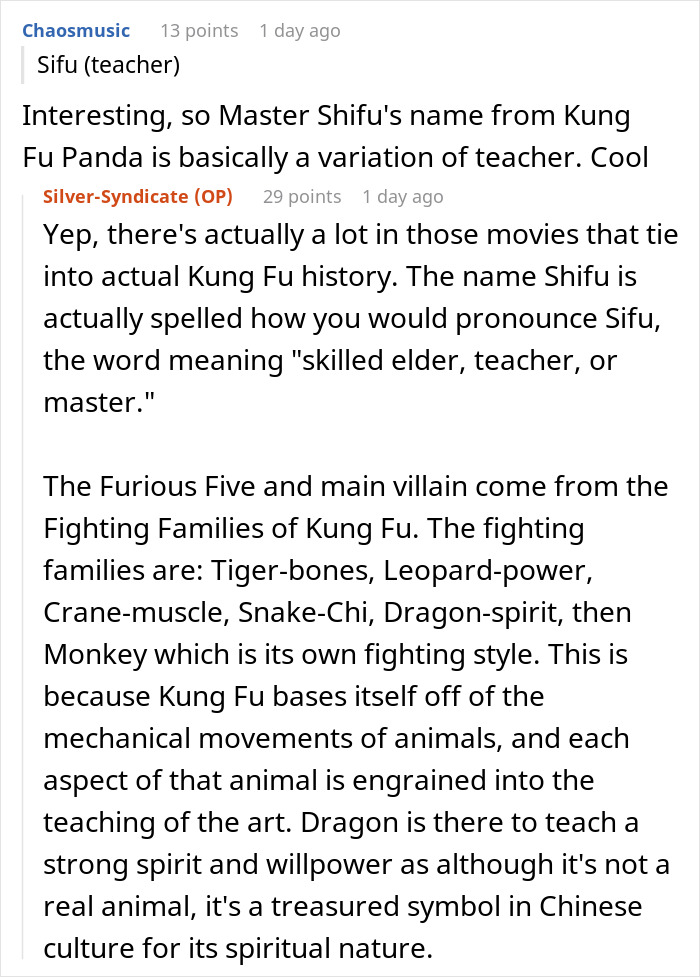

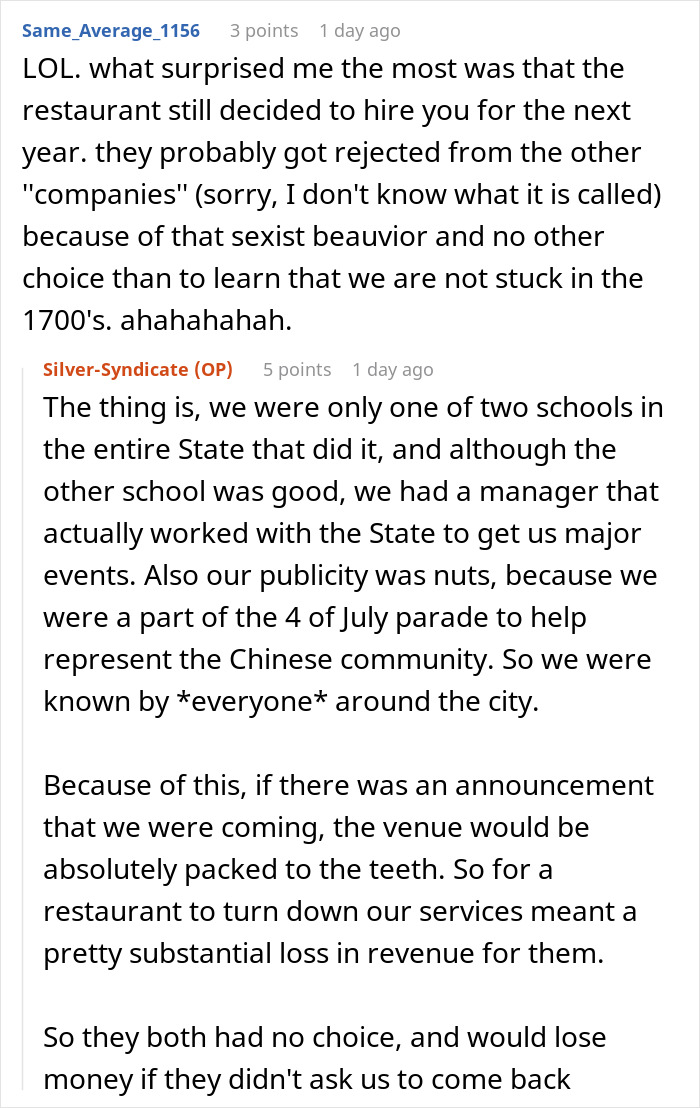
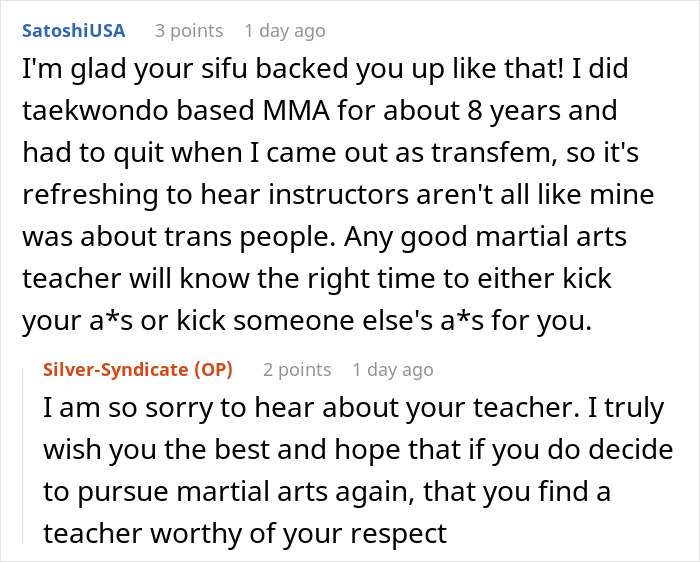

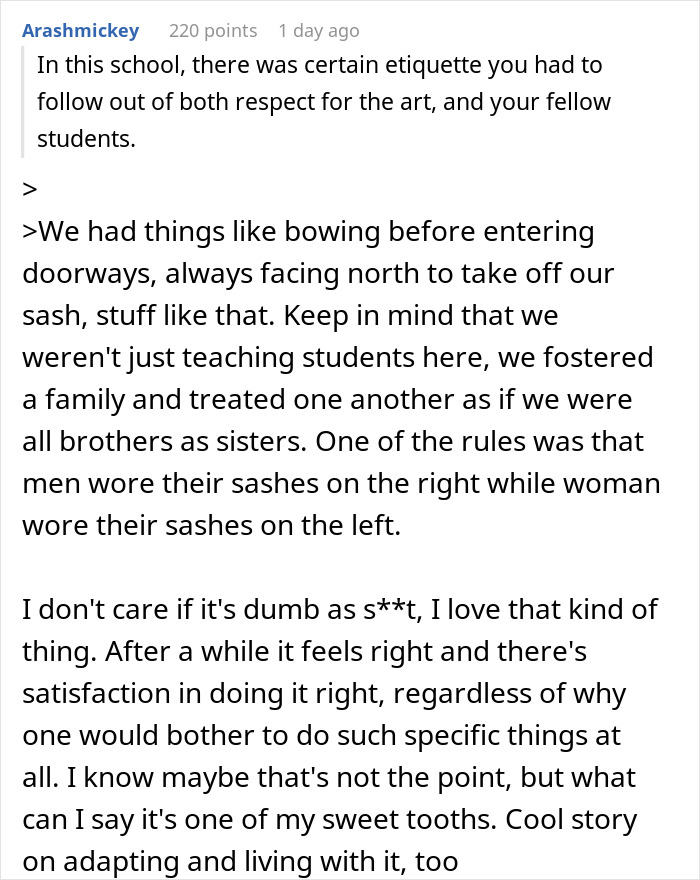



Some redditors weren’t too happy with the situation, though
